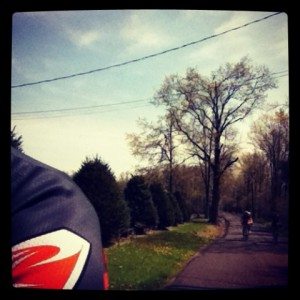 Mainstream advertising has led us to believe that we have to buy things to make us faster: wheels, bike frames, helmets and special clothing are all touted as the quick way to get faster. It's also a quick way to drain your wallet. But if you're looking to invest in some speed, most of you know that you can't go wrong with hiring a coach or following a structured training plan. What you may not know is that you can squeeze even more speed, power and endurance out of the fitness you already have or you can raise the bar on our structured training by increasing your efficiency.
Mainstream advertising has led us to believe that we have to buy things to make us faster: wheels, bike frames, helmets and special clothing are all touted as the quick way to get faster. It's also a quick way to drain your wallet. But if you're looking to invest in some speed, most of you know that you can't go wrong with hiring a coach or following a structured training plan. What you may not know is that you can squeeze even more speed, power and endurance out of the fitness you already have or you can raise the bar on our structured training by increasing your efficiency.
Defined as “accomplishment of or ability to accomplish a job with a minimum expenditure of time and effort”, raising your efficiency will allow you to ride faster, raise your functional threshold power (FTP) and feel fresher at the end of a long ride so you can contest that final sprint. But how do we accomplish this? Today's podcast will discuss how to become more efficient on the bike, including:
- Positive vs negative self talk
- Learning to relax
- Neuromuscular efficiency
- How to integrate these concepts into your training
Comments and questions are always welcome.
Podcast: Play in new window | Download (Duration: 41:13 — 18.9MB)
Subscribe:
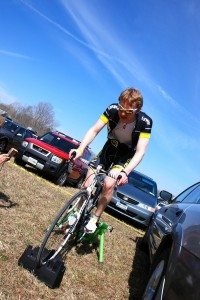 “Do it right on race day” is a lesson that every racer should live by and one that should be drilled into their head. Race performance begins in the days before when you start to get everything ready to roll. In fact, poor race day prep can actually set you up for a poor performance even before the first pedal is turned in anger.
“Do it right on race day” is a lesson that every racer should live by and one that should be drilled into their head. Race performance begins in the days before when you start to get everything ready to roll. In fact, poor race day prep can actually set you up for a poor performance even before the first pedal is turned in anger.
We'll discuss proper race day preparation as well as preparation in the days prior. Some topics we'll cover include:
- Loading your gear and prepping your bike
- Eating prior to your race
- Arrival time and warmup time
- Warming up on the trainer
- Proper dress
As always, comments and questions are welcome.
As a reminder, my “Berg Buster” is still available (until April 21st) for FREE with the code “classicsgift”.
For those of you racing Battenkill, I'll see you there. Good luck, stay safe!
Podcast: Play in new window | Download (Duration: 35:38 — 16.3MB)
Subscribe:
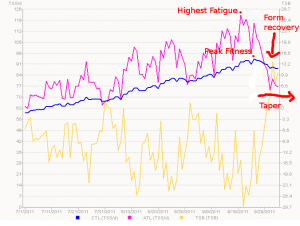 With spring racing in full force, many people are hitting the peak phase of their periodized training plans. Periodized training is a method by which an athlete structures their training towards certain goals, and it consists of a long term, full year picture (macrocycle), smaller blocks of training and recovery (mesocycles, typically 4 weeks long) and the single week's worth of training and recovery (microcycle).
With spring racing in full force, many people are hitting the peak phase of their periodized training plans. Periodized training is a method by which an athlete structures their training towards certain goals, and it consists of a long term, full year picture (macrocycle), smaller blocks of training and recovery (mesocycles, typically 4 weeks long) and the single week's worth of training and recovery (microcycle).
Within this concept of periodized training, the ultimate goal of a training block, which I like to refer to as a super-mesocycle (basically a group of 3 or 4 mesocyles bundled together) is a peak performance, usually for an “A” category race. The question most athletes ask is “What exactly is peak performance and how do I get there?” After an event, people often ask me “Why was my performance so poor? Did I not train enough?”
I'd like to suggest that peak performance is not really driven by what happens during the “build phases” of your training plan, and is not really driven by the amount of training you've done (to some extent anyway.) You can be one of the fittest riders in the group, but a poor quality “peak” phase can destroy an otherwise strong and fit athlete.
On today's podcast, we'll learn what the significance of the “peak” phase is and how we transition from the build phase into a peak performance, including:
- The peaking model
- Building form vs. fitness
- Peak week intensity, frequency and duration
- The importance of “painkillers” in relation to peak performance
- Should you rest the day before an “A” race?
As a reminder, you can get a FREE “Berg Buster” HIT workout by using the code “classicsgift” through April 21st.
Thoughts? Comments? Remember to head over to iTunes and leave a review if you enjoyed the podcast.
Podcast: Play in new window | Download (Duration: 41:28 — 19.0MB)
Subscribe:
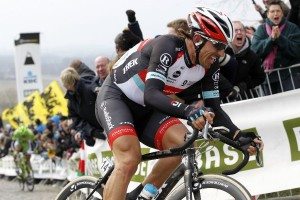 [dc]T[/dc]he spring classics are in full swing, with fans and riders deep in the throes of Holy Week. With Scheldeprijs being only a day away and Roubaix looming on Sunday, the cobbled classics are nearing a close, although no doubt we are in for some more spectacular performances. Up next will be the Ardennes Classics, with their steep bergs and tortuous descents. For many cyclists, it's the absolute best part of the season, if not for riding but for watching.
[dc]T[/dc]he spring classics are in full swing, with fans and riders deep in the throes of Holy Week. With Scheldeprijs being only a day away and Roubaix looming on Sunday, the cobbled classics are nearing a close, although no doubt we are in for some more spectacular performances. Up next will be the Ardennes Classics, with their steep bergs and tortuous descents. For many cyclists, it's the absolute best part of the season, if not for riding but for watching.
Watching these races inspires many but saddens some at the same time: "Why can't I climb like that" and "I don't know how he does that" are common phrases uttered while riders shatter the steep bergs and cobbled pitches of the classics. It takes a special kind of rider to be able to climb that stuff, right?
Nope. What if I told you everyone can train to be better on the moderate length, steep climbs. And for the duration of the classics, I'm GIVING AWAY a HIT workout that will help you do just that.
Simply copy the enter the code "classicsgift" between now and April 21st (Liege Bastogne Liege) during checkout to get your FREE "Berg Buster" HIT workout (available below).
HIT Berg Buster Climbing Workout
Workout details: Paying homage to the medium length (1 mile in length or less) steep bergs of Belgium, this HIT workout is designed to train your body for the stresses of attacking moderate climbs. Grouped into blocks, the first block will focus on pushing hard gears through your most powerful muscles (glutes and hamstrings) and accelerating in the saddle using your quads, simulating surges in the peloton. The second block will force you to get comfortable accelerating out of the saddle to simulate covering attacks from the front. The third block puts it all together, teaching you how to be a berg busting ace!
Number of items in cart: 0
- Your cart is empty.
- Total: $0.00
- Checkout
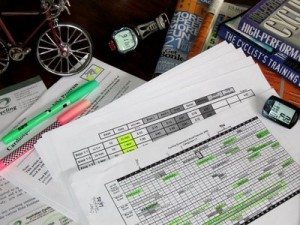 Spring has sprung in the northeast, and that means forums are humming with training discussions and group rides are filled with chatter of “how have you been training?” There's a lot of talk about sweet spots, hill repeats and base miles. If you dissect those conversations, how many of them contain legitimate information and how many are just stuffed with buzz words and poor implementation of (misunderstood) concepts?
Spring has sprung in the northeast, and that means forums are humming with training discussions and group rides are filled with chatter of “how have you been training?” There's a lot of talk about sweet spots, hill repeats and base miles. If you dissect those conversations, how many of them contain legitimate information and how many are just stuffed with buzz words and poor implementation of (misunderstood) concepts?
In today's podcast, we'll discuss a few training concepts that I've seen talked about recently, what people are saying (incorrectly) about implementing them, and how you can avoid those pitfalls.
We'll cover:
I also hope everyone notices that the Tailwind Coaching podcast is now on STITCHER and PODBEAN. Check it out there for mobile options and more download options.
Questions or comments? Post below and start the discussion.
Podcast: Play in new window | Download (Duration: 52:22 — 24.0MB)
Subscribe:
 Mainstream advertising has led us to believe that we have to buy things to make us faster: wheels, bike frames, helmets and special clothing are all touted as the quick way to get faster. It's also a quick way to drain your wallet. But if you're looking to invest in some speed, most of you know that you can't go wrong with hiring a coach or following a structured training plan. What you may not know is that you can squeeze even more speed, power and endurance out of the fitness you already have or you can raise the bar on our structured training by increasing your efficiency.
Mainstream advertising has led us to believe that we have to buy things to make us faster: wheels, bike frames, helmets and special clothing are all touted as the quick way to get faster. It's also a quick way to drain your wallet. But if you're looking to invest in some speed, most of you know that you can't go wrong with hiring a coach or following a structured training plan. What you may not know is that you can squeeze even more speed, power and endurance out of the fitness you already have or you can raise the bar on our structured training by increasing your efficiency.


